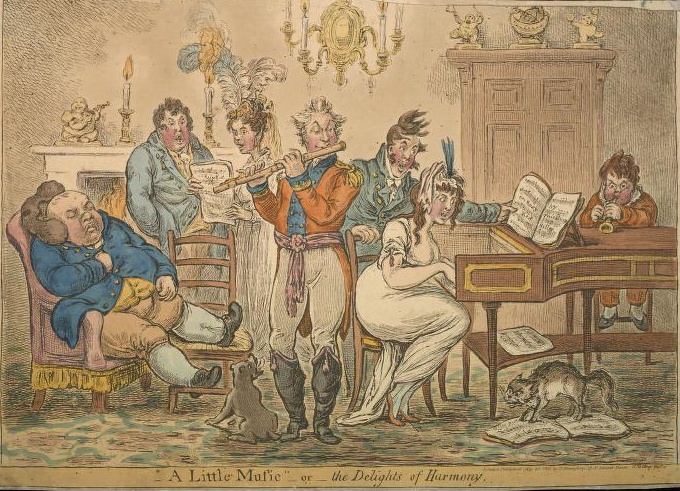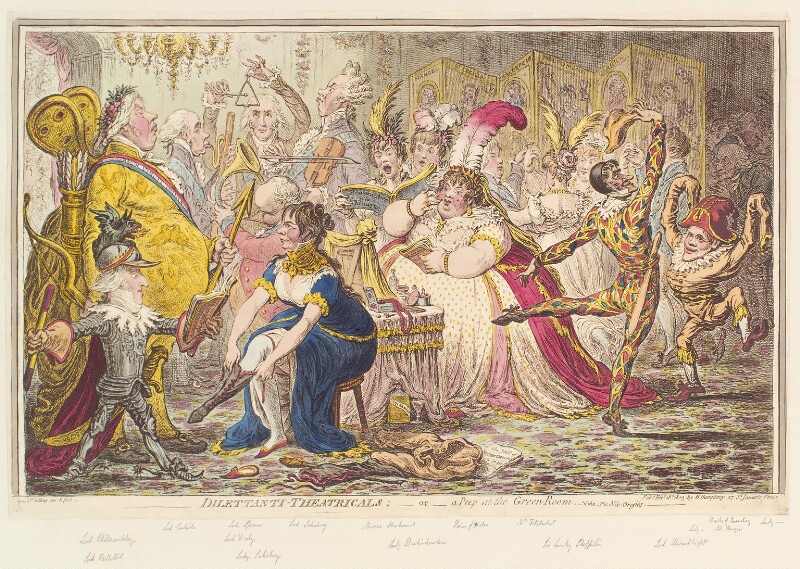Regency Reader Question
Dear Anne Glover, I’m thinking about writing an unusual short story about a Georgian/Regency era gentleman who develops an eating disorder from trying to lose a few pounds. He binges, purges, starves himself, and then repeat. So I was wondering, were eating disorders common in this era? If so, did MOSTLY the ladies suffer from them ( age-old double standard I guess ), or did some gents suffer from them as well?
| Source of Question | Just curious |
| Additional comments | Also, I would like to bring to your attention that I’ve heard/read that portliness/plumpness was at this time a sign of fertility, wealth, and health. However, the Prince Regent was heavily mocked for being very fat. So if you could, I would appreciate some answers whenever you find time to post on this. Sincerely, Caroline. |
Thank you for your question, and for being a Regency Reader!
The bulk of the scholarly research on eating disorders suggests that anorexia was first identified in the Victorian era (Striegel-Moore, 2007). Binge eating disorder would be recognized later.
We wrote a bit about ideal body types in the era in this post: Regency Reader Questions: Fashion Plates and Ideal Body Types – Regency Reader (regrom.com)
There is some evidence that by the Regency era obesity was beginning to be considered a disease (Wadd, 1816) or medical condition.
As the above excerpt indicates, a “reducing diet” or restrictive diet and exercise were recommended for corpulence. This was not a gendered recommendation, so would have been the case for men and women.
Many images from the time show a diversity of body shapes, often with no commentary one way or another. While it appears the “for health” argument about body size started to come into play in the early 19th century, and there certainly were fashionable standards, I think the social pressure was considerably less for affluent people and even less so for middle and lower classes. There were products on the market for men and women, like corsets or shapewear to produce a more fashionable figure, but that didn’t mean everyone wore them or strove to be thin.

Exhibition_of_Water_Coloured_Drawings,_Old_Bond_Street


I think eating disorders are probably as old as human history, but I do not think they were common enough during the era to be widely understood or identified.
Striegel-Moore, R. H., & Bulik, C. M. (2007). Risk factors for eating disorders. American psychologist, 62(3), 181.
THOMAS, R. (1813). The Modern Practice of Physick, etc. United Kingdom: (n.p.).
Wadd, W. (1816). Cursory remarks on corpulence; or Obesity considered as a disease. United Kingdom: (n.p.).











Thank you for your helpful answer, Anne.
Wasn’t Lord Byron a fanatic about becoming overweight? https://www.mentalfloss.com/article/78761/lord-byrons-obsession-dieting
Thanks for sharing the link! Fascinating!